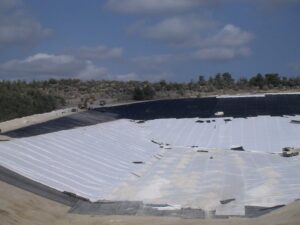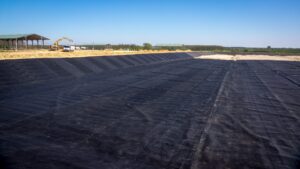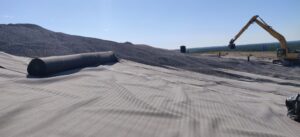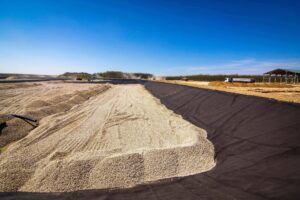Geosynthetics are synthetic fabrics that are used in a variety of civil engineering applications, including landfill construction. Geotextiles are commonly used in landfill construction because they can improve the stability and performance of the landfill, while also reducing maintenance and repair costs. The geotextiles also improve the overall safety and environmental impact of landfill projects.
Landfill sites require that the waste is effectively contained for very long periods of time in a waterproof system, avoiding any contact with the waste material or leachate from coming into contact with the soil and groundwater. High-performing lining systems are needed, which incorporate heavy-duty geotextiles to add a long-lasting layer of protection to this system. These geotextiles avoid damage to the liner by waste or granular materials.
Geotextiles and drainage composites can also assist in landfill construction with drainage. Geotextiles and drainage composites can be placed below the waste materials to allow water to drain away, helping to prevent standing water and reducing the risk of leachate formation. They can also be used as drainage systems to move fluids away from the waste to water treatment locations.
Geotextiles and composite products are useful components in the capping of a completed landfill system, making sure the contained waste is securely stored effectively protecting the liner membrane and rapidly evacuating the water on top of the capping system.
As landfills are very expensive projects that require long lasting performance. BontexGeo’s geotextile products come with a service life of minimum 100 years which means the need for service and/or renewal of certain structures (for example the capping structure) is signifcantly reduced. Thus, the overall maintenance cost can be reduced by choosing high quality, long lasting components.



